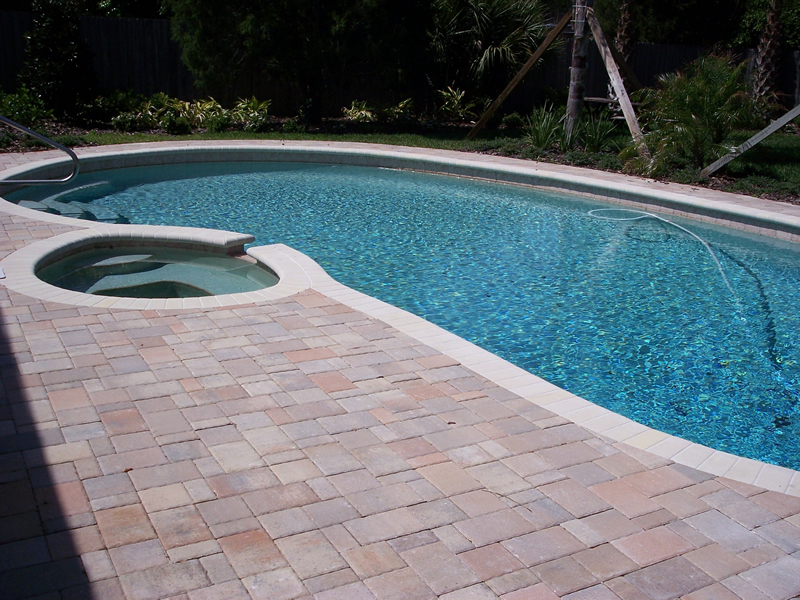The level at which the swimming pool skimmers operate best is between one third and one half the way up the opening of the pool skimmer. If the level is higher, the water moving into the skimmer is going so slow that debris may pass by the opening without being pulled in.
What do you do with your pool after it rains? Rain can be acidic, and it affects your pool’s pH balance. After a heavy rain, you’ll also have extra water in the pool that can dilute the chemistry. If you get some light showers, I wouldn’t worry too much about the pool chemistry. A light rain will have very little effect, if any, on your pool water. However, it wouldn’t hurt to do these checks anyway, if only for good measure.
If you’ve lost power, you won’t be able to properly clean your pool. First, remove any debris from the skimmer and pump baskets before starting your pump and filter. First, remove any debris from the skimmer and pump baskets before starting your pump and filter. Then, get the pump running so that you can start filtering out any small debris.
Attached a leaf net or flat skimmer to your telescopic pole and make sure all the debris is off the top of the water. If you don’t do this before vacuuming, you’ll have more to vacuum when all the surface debris falls to the bottom. You can also use a garden hose or broom to clean the deck and around the pool, so no extra debris gets in while your skimming. If you decide to use a garden hose, I suggest spraying away from the pool, so you don’t create more work for yourself.
Brush any debris from the steps or ladders of your pool so your vacuum or filter can get it. If you have a drain at the bottom of your pool, use your pool brush to push debris towards that. If your pool doesn’t have a lot of debris at the bottom, you can use an automatic pool cleaner instead of your manual vacuum. If that’s not the case, vacuum your pool manually. Here is a video on how to set it up your manual pool vacuum. If you had a lot of rain, your pool may have extra water. This is good if you need to vacuum at a lot of debris off the bottom of your pool to waste. But if you have little or no debris, pump the excess water by turning your filter to “waste,” hooking up your backwash hose, and turning your pump on. Pump out the water until the waterline reaches the halfway point on the skimmer plate or about 6 to 8 inches from the top of the pool.
Test to make sure your levels are still in a good range. Rain and debris have a big effect on your water’s chemistry and rain can cause your pH to drop quickly. If the storm was big, it may be a good idea to get the water professionally checked; you don’t want to end up with a green or cloudy pool from the storm. When rain tries to lower the pH, the alkalinity will take the big hit. That means, your alkalinity levels might see a more drastic change than your pH levels. Also, check your chlorine or sanitizer levels. Rain can often introduce contaminants to your water, and your sanitizer will start fighting them off. You won’t need to worry too much about your calcium or cyanuric acid levels. These are not greatly affected by the rain beside dilution.
We invite you to experience the Osceola Aquatics difference since 1981. Osceola Aquatics is one of the most trusted pool builders and contractors in Osceola County. We offer comprehensive custom pool design, construction and remodeling to homes throughout Central Florida. In addition to our beautiful custom designed pools, Osceola Aquatics offers pool supplies, pool maintenance and water treatment and conditioning for your entire home. We know that whatever your needs may be, Osceola Aquatics can accommodate you. We are conveniently located at 1551 Kelley Ave, Kissimmee, FL 34744. Take the next step to your dream pool by calling (407) 846-1430 for a consultation today.


Recent Comments